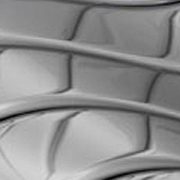Flux? What’s that?
“What is flux? What is it for and why do we need more of it?” These are questions pondered by engineers, technicians and predictably, those in your purchasing department. Flux plays a crucial role in the soldering process. Your process may be part of fabricating or manufacturing. You might be soldering for repairs or a hobby. From radiators to batteries, models to vintage cars – soldering allows you to bond metal to metal at lower temperatures than brazing or welding. No matter the final application, one thing rings true: You need flux to solder. It’s a great multi-tasker and fulfills many roles.
A flux’s purpose can be broken down into several parts. First, it must effectively spread on the metal to be soldered. It must clean the metal surface and keep it clean until the molten solder alloy reaches it. Finally, it must promote the spreading of the solder on the surface of the metal. Effective flux formulations are designed to do all of these things. To make a long story short, fluxes typically are aqueous solutions containing a solvent, activator package and a wetting agent. To make a short story long…
A good flux spreads itself on the metal surface
A flux that spreads itself on the surface properly will look flatter and cover more surface area. This is known as wetting to the surface. A flux that doesn’t wet to the surface will stay where you put it and not clean any other areas. The thing in the flux that allows it to spread effectively is called the wetting agent. A wetting agent is also known as a surfactant. A good wetting agent leads to the flux being more efficient. You end up using less flux to solder an area than if there was no wetting agent. Less flux means that cost goes down and that should make everyone happier. Alternatively, excessive application of flux can result in poor control of soldering conditions because the volume of flux will vary from part to part. Heavy applications are usually only necessary when the flux has not been properly formulated to efficiently wet the surface.
A good flux cleans the metal surface
Solder alloys can be particular. They will not stick to a metal surface covered with oxides, oil, or dirt. This is the main reason why most fluxes are acidic in nature. The specific chemicals that accomplish the final cleaning of the surface before soldering make up the flux’s activator package. First the oils on the surface are penetrated and emulsified by the wetting agent. Then it gets under any dirt or other foreign material to aid in lifting it. In other words, this means the wetting agent mixes with the oils to make them easier to remove, much like how detergent will make it easier to remove greasy foods and oils from a dirty pan. Finally, the acid removes oxides by converting them to soluble metal salts. Any dissolved oxides and dirt are moved out of the way by the flux to make room for the molten solder alloy. This leaves a clean metal surface to which the solder can bond.
A good flux keeps the metal surface clean and oxide-free
It is very important to prevent reoxidation of the cleaned surface before the solder flows. The flux and its activator package just worked very hard to make a clear, solderable surface. But the oxygen in the air we breathe wants to remake a nice oxide layer all over the metal. The way the activator package does this depends on the formula. Some are inorganic in nature, others are rosin based and others still are organic. They work to stay active throughout the heating process and keep the metal clean. Much of the time, the activator will leave a residue after the soldering is completed. Again, depending on the formulation, this residue can either be left on or washed off after soldering is complete.
A good flux helps the solder alloy flow on the metal surface
Just as the flux itself spreads onto the surface, the solder alloy must also. A good flux will lower the surface tension between the metal and the molten solder. Before, the surfactant was a wetting agent to help the flux spread. Now the flux is a wetting agent for the solder alloy. The better a flux is at this, the better it performs in something like a solderability test. The activator package “jump starts” the solder flow by etching the surface and the surfactant promotes the continuation of the solder flow by wetting the surface. These actions can begin as soon as the flux is applied, and work best in the soldering temperature range specified in a flux’s spec sheet.
With all these various functions, parts and variables, the key to a solid, efficient and reliable soldering application is the right flux. The flux should match the solder alloy, the temperatures and heating methods used and the base metals you are working with.
To browse different fluxes, take a look at our Fluxes for Industrial Applications, our Fluxes for Electronics Applications or even our unique Fluxes for Soldering Aluminum.
Not sure where your application falls? Not sure if you’re even soldering? Sure but want some more communication in your day? Head over and Contact Us. We’ll be happy to help you out.



